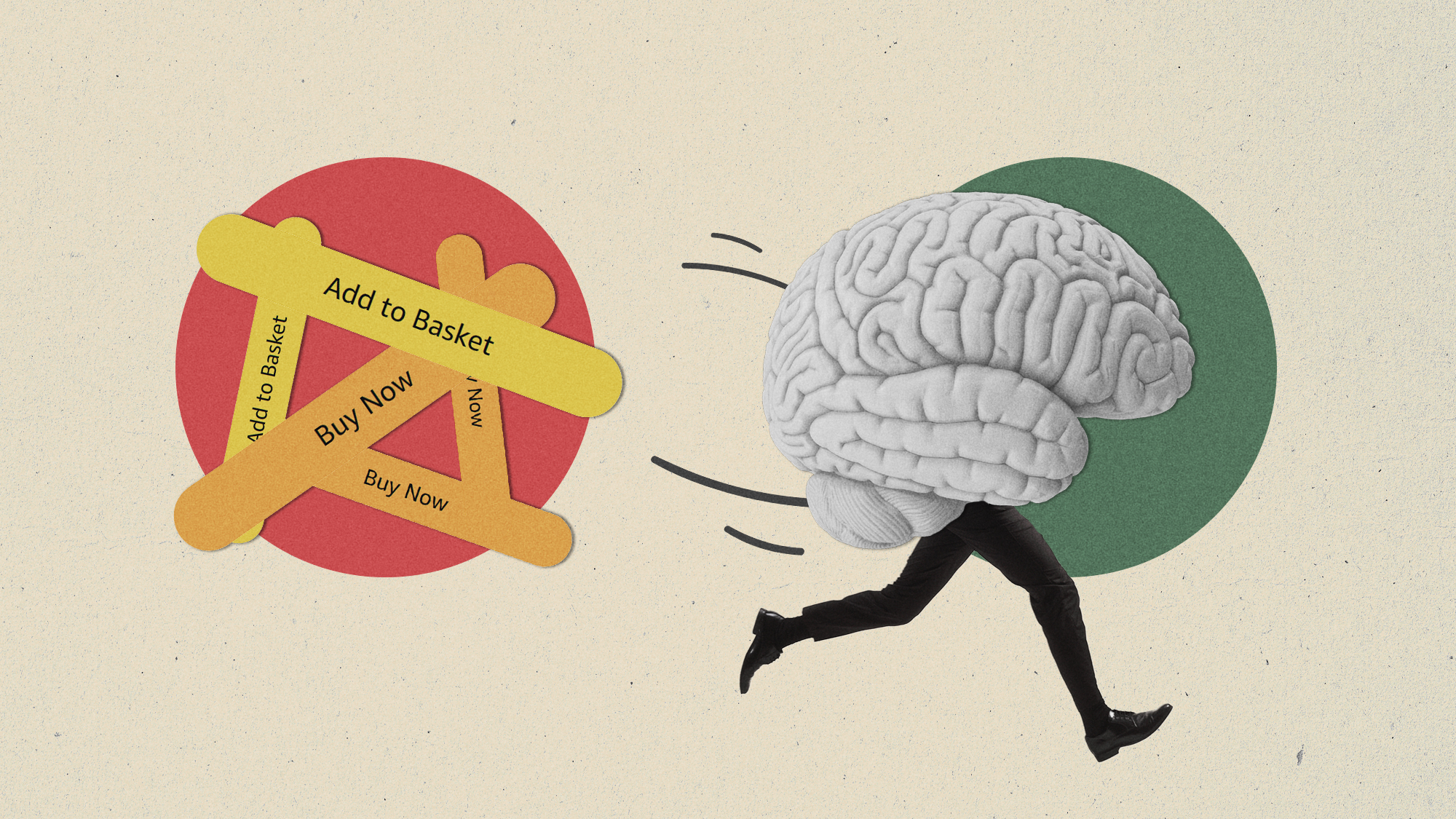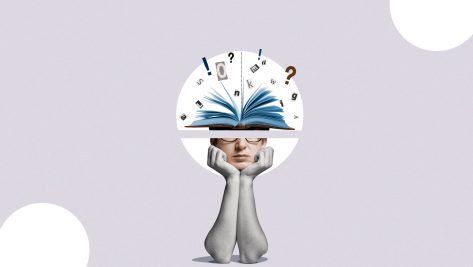With every click, swipe, and purchase, AI learns more about us. But are we really choosing for ourselves, or simply following prompts we barely notice?
Even in 2017, Netflix reported that more than 80% of the content people watch is driven by its recommendation algorithm. The same underlying mechanics are now powering everything from online shopping to newsfeeds and one-click checkouts. What began as convenience has become a system that shapes what we consume – and, increasingly, why we want specific products.
Algorithms don’t just track behavior, they shape it. As AI becomes more deeply embedded in commerce and culture, the question isn’t just how to reach consumers, but how to empower them. Will AI fuel more impulsive, emotionally driven purchases – or help us make wiser, more intentional decisions? The answer depends on how these tools are designed, and whether consumers are willing to push back.
As AI transforms marketing and consumption, the challenge remains: Will it drive excess or enable responsible marketing, ethical product design, and sustainability?
Our patterns of consumption have changed radically over time. In the pre-industrial era, people primarily consumed what they needed to survive, drawing on local resources and making decisions rooted in practicality. There was little space for excess, and even less for choice – one simply made do with what was available within a few miles’ radius, as highlighted by historical accounts of early modern consumption. That changed with the Industrial Revolution, when mass production made goods more widely available and affordable. The rise of textile mills in Manchester, for example, meant cotton shirts became more broadly accessible – fundamentally altering daily life and economic structures.
As supply outpaced basic demand, advertising stepped in, not just to inform, but to persuade. Products evolved to become prestige, lifestyle, and identity-related aspirational symbols. Levi’s ads – promoting a basic pair of denim pants – captured small-town America from the late 1950s and 60s and turned a functional item of clothing into a global cultural emblem by marketing a complete attitude of strong individuality and cool American style.
These systems are finely tuned to pick up on moments of emotional vulnerability.
Today, in the digital and AI age, choice is both abundant and instant. One-click purchases on platforms like Amazon, for example, have collapsed the time between desire and acquisition into mere seconds, thanks to Amazon’s 1-Click patent. Algorithmic recommendations, based on vast datasets of our browsing and purchasing habits, constantly nudge us towards new products, often before we even realize we “need” them. Influencer-driven trends on platforms such as TikTok Shop further compress desire into immediate purchase – users are able to buy products directly from short-form videos, demonstrating the platform’s significant impact on consumer behavior.
This constant exposure to curated consumption opportunities is staggering. Some reports estimate we now see anywhere between 6,000 and 10,000 ads a day. This is far more than previous generations. Faced with this constant stream of choices, it’s no surprise our brains start to tire. The result? Decision fatigue, a psychological phenomenon where the quality of decisions deteriorates after prolonged periods of choosing, often resulting in impulsive purchases or a desire for simpler options.
Consumption is no longer just a response to need – it’s a constant background hum, shaped by forces we rarely pause to question. Are we truly making our own choices, or are they being made for us?
AI does increasingly shape what, how, and when we consume – and unfortunately in ways that we don’t fully register. Think about your social media feeds: they’re not just showing you what your friends and family are up to. By deftly cultivating a persistent FOMO (fear of missing out), algorithms are turning products and experiences into powerful symbols of status and belonging. That Instagram photo of your friend’s ideal vacation, which is often discreetly tagged with a resort or clothing line, is more than simply a picture; it’s an algorithmic prod, a well-manicured dream. More and more research indicates that social media plays a part in exacerbating FOMO and has a direct impact on decisions for everything from vacation to lifestyle goods.
Personalization algorithms are presented as something that can make life easier by helping you find exactly what you want and quickly, but they can trap us in feedback loops that simply give us more of what we’ve liked before. This quietly limits our ability to explore new things and to choose differently. On Amazon, for instance, those “Recommended for you” sections are very good at surfacing more of what you’ve previously purchased, but they also quietly limit the opportunity to stumble upon something truly new and choose differently. This creates what some call a ‘filter bubble’ or ‘echo chamber’ for your desires. Even with Spotify’s fantastic “Discover Weekly” playlists function mostly within one’s own taste profile, making it more difficult to explore diverse genres or artists without conscious effort.
Meanwhile, these systems are finely tuned to pick up on moments of emotional vulnerability. Have you ever noticed how a brief late-night web search can result in a morning deluge of advertisements for related products? That hesitation over a product, that late-night browse, a click on something aspirational – these all become an opportunity for the algorithm to trigger a quick-fix purchase.
This is not about convenience; it’s about algorithms leveraging our natural desire for instant gratification and the ‘dopamine hit’ we get from acquiring something new. In this environment, consumption becomes less about what we truly need or value and more about how effectively our attention and desires can be monetized, turning fleeting emotions into tangible transactions.
It’s worth noting, of course, that most impulse buying doesn’t happen online. According to CapitalOne, 80% of impulse purchases still occur in physical stores, compared to just 20% online. Yet the digital environment is far from neutral: 72% of online shoppers say they’ve bought something on impulse, often triggered by advertised discounts. This reinforces how online platforms are increasingly engineered to generate urgency and emotional reaction – even if they don’t yet dominate all impulse purchases.
According to Michael Luchs of William and Mary School of Business, consumer wisdom is related to how we spend our personal resources and how this affects our well-being. It places intentionality, sustainability, and well-being over impulse and excess. This includes making decisions that align with our values, taking long-term benefit into account rather than just convenience, and staying aware of how social pressures or algorithmic nudges might be shaping our choices. It also means recognizing when ownership isn’t necessary – when borrowing, repairing, or simply going without might serve us better. At its core, wise consumption challenges the idea that more is always better. It asks whether a purchase is truly aligned with what matters to us, and whether it contributes to our well-being rather than distracts from it.
While AI has amplified consumerism, it also holds the potential to empower wiser consumption, if used responsibly. There are two possible futures. One is the more the dystopian path, where AI becomes a force of manipulative consumption. AI-driven marketing continues to exploit psychological triggers, making consumers more impulsive and anxious.
This erosion of self-awareness and intentionality doesn’t just lead to cluttered inboxes and leaner wallets; it chips away at our sense of agency and reinforces habits that prioritize the dopamine hit over long-lasting and meaningful satisfaction. Social media has only intensified this effect, with what has come to be known as “dopamine-scrolling,” where social media users receive mini-rewards from algorithmic feeds that hijack attention and fuel compulsive use patterns, normalize impulsive purchases, and encourage mindless consumerism.
Then there is the ethical path, where AI becomes a tool for wise consumption. It prioritizes quality, longevity, and ethical sourcing, helping consumers make better-informed decisions. Predictive maintenance features prolong product life, reducing waste and needless purchases. Platforms can be designed to encourage values-based purchasing, aligning decisions with individual and community well-being.
We have the power to decide whether AI will be a force for waste or wisdom.
The opportunity for marketers and business leaders is clear: facilitate meaningful consumption instead of merely promoting products. This implies creating long-lasting – not disposable – products. Take, for example, Fairphone, which provides modular, repairable smartphones rather than throwaway devices.
Businesses should also prioritize ethical AI. Rather than using algorithms to manipulate, AI should be used to educate, empower, and align choices with values. For example, what if, when consumers went on Amazon to buy product replacements, they were also shown repair kit options, or even links to local repair services? The tech to make this happen already exists, companies just need to want to do it. Take Patagonia’s Worn Wear programme, for instance. They employ data and AI-driven insights to understand what items are frequently repaired or traded in, even though their strong repair service and used gear sales are what make them most famous. Offering a service is only one aspect of this; another is changing the conversation from “buy new” to “repair and reuse.” Instead of just throwing away their cherished jackets and purchasing new ones, their communication successfully encourages people to repair them or trade them in for compensation.
This shift requires a rethinking of the four Ps of marketing:
- Product: Designed for longevity, not planned obsolescence.
- Price: Transparent and value-driven, not exploitative.
- Place: Sustainable, reducing unnecessary logistics and waste.
- Promotion: Ethical, guiding consumers toward informed decisions.
For consumers, the challenge is to practice thoughtfulness and introspection in order to regain agency over their decisions. We must stop and ask ourselves: “Do I need this?” rather than allowing algorithms to dictate our desires.
© IE Insights.











